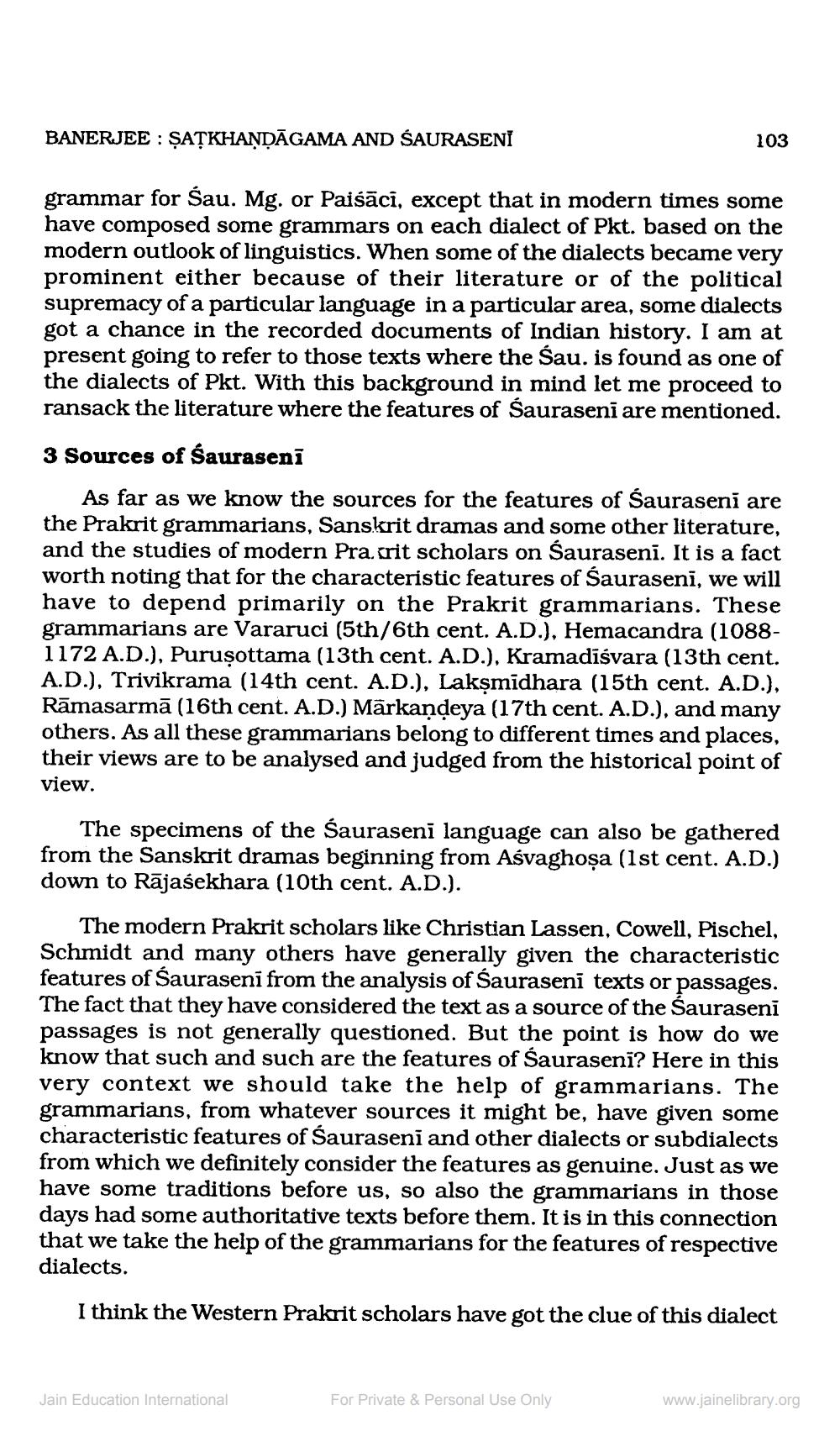Book Title: Jain Journal 1996 04 Author(s): Jain Bhawan Publication Publisher: Jain Bhawan Publication View full book textPage 5
________________ BANERJEE : ȘAȚKHANDĀGAMA AND ŚAURASENÍ 103 grammar for Sau. Mg. or Paisāci, except that in modern times some have composed some grammars on each dialect of Pkt. based on the modern outlook of linguistics. When some of the dialects became very prominent either because of their literature or of the political supremacy of a particular language in a particular area, some dialects got a chance in the recorded documents of Indian history. I am at present going to refer to those texts where the Sau. is found as one of the dialects of Pkt. With this background in mind let me proceed to ransack the literature where the features of Sauraseni are mentioned. 3 Sources of Sauraseni As far as we know the sources for the features of Sauraseni are the Prakrit grammarians, Sanskrit dramas and some other literature, and the studies of modern Pra.crit scholars on Sauraseni. It is a fact worth noting that for the characteristic features of Sauraseni, we will have to depend primarily on the Prakrit grammarians. These grammarians are Vararuci (5th/6th cent. A.D.), Hemacandra (10881172 A.D.), Puruşottama (13th cent. A.D.), Kramadiśvara (13th cent. A.D.), Trivikrama (14th cent. A.D.), Laksmidhara (15th cent. A.D.), Rāmasarmā (16th cent. A.D.) Märkandeya (17th cent. A.D.), and many others. As all these grammarians belong to different times and places, their views are to be analysed and judged from the historical point of view. The specimens of the Sauraseni language can also be gathered from the Sanskrit dramas beginning from Ašvaghoșa (1st cent. A.D.) down to Rājasekhara (10th cent. A.D.). The modern Prakrit scholars like Christian Lassen, Cowell, Pischel, Schmidt and many others have generally given the characteristic features of Saurasenī from the analysis of Sauraseni texts or passages. The fact that they have considered the text as a source of the Sauraseni passages is not generally questioned. But the point is how do we know that such and such are the features of Saurasenī? Here in this very context we should take the help of grammarians. The grammarians, from whatever sources it might be, have given some characteristic features of Sauraseni and other dialects or subdialects from which we definitely consider the features as genuine. Just as we have some traditions before us, so also the grammarians in those days had some authoritative texts before them. It is in this connection that we take the help of the grammarians for the features of respective dialects. I think the Western Prakrit scholars have got the clue of this dialect Jain Education International For Private & Personal Use Only www.jainelibrary.orgPage Navigation
1 ... 3 4 5 6 7 8 9 10 11 12 13 14 15 16 17 18 19 20 21 22 23 24 25 26 27 28 29 30 31 32 33 34 35 36 37 38 39 40 41 42 43 44 45 46 47 48 49 50 51 52 ... 55
